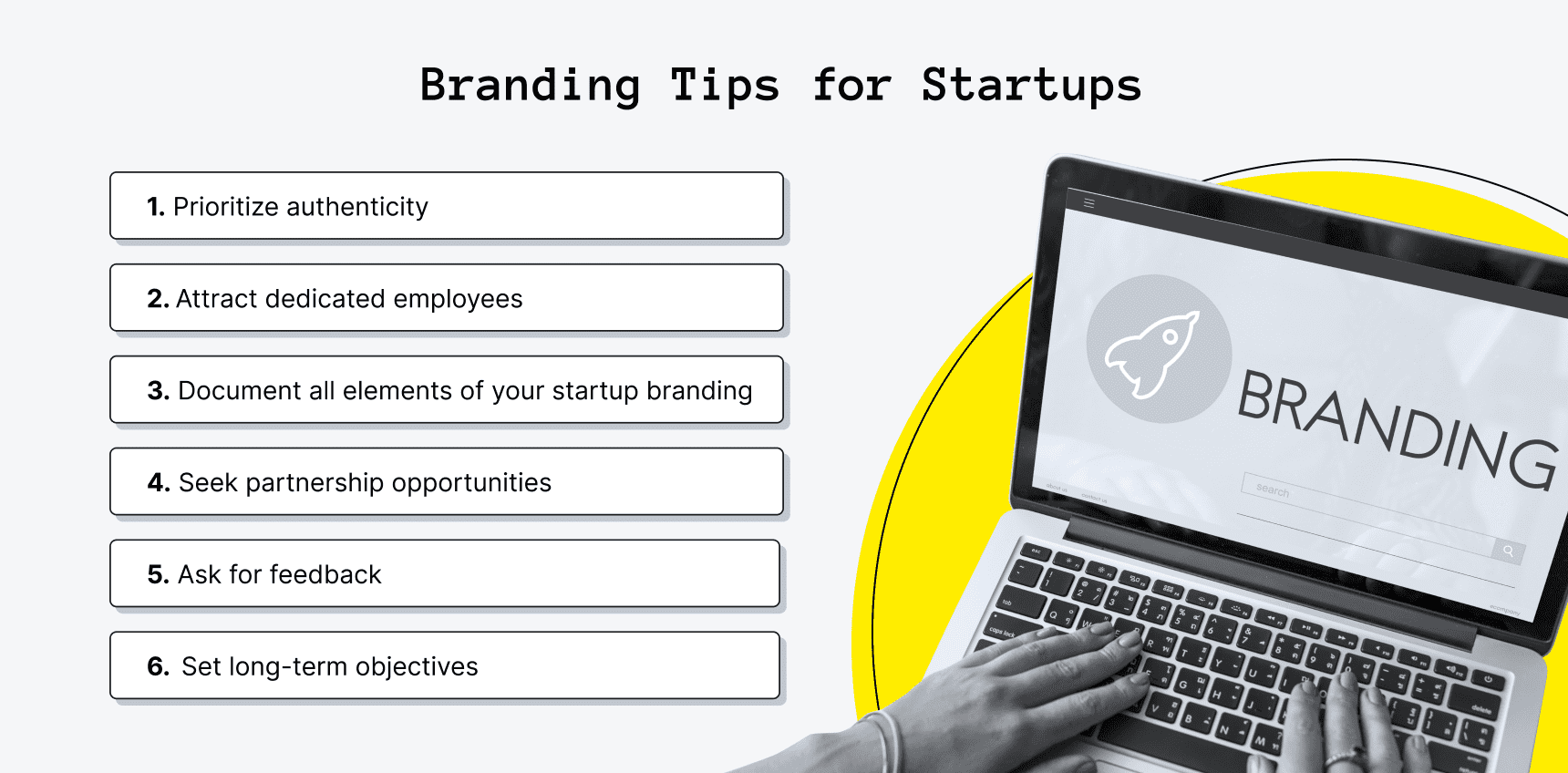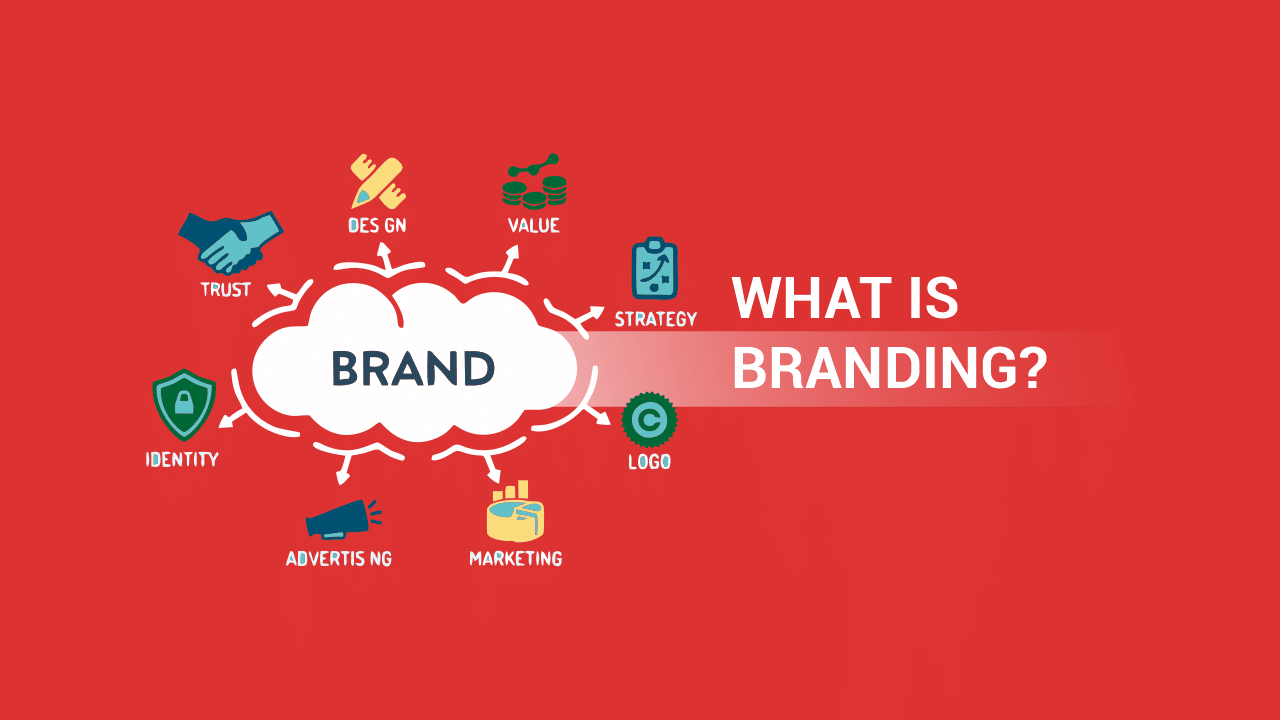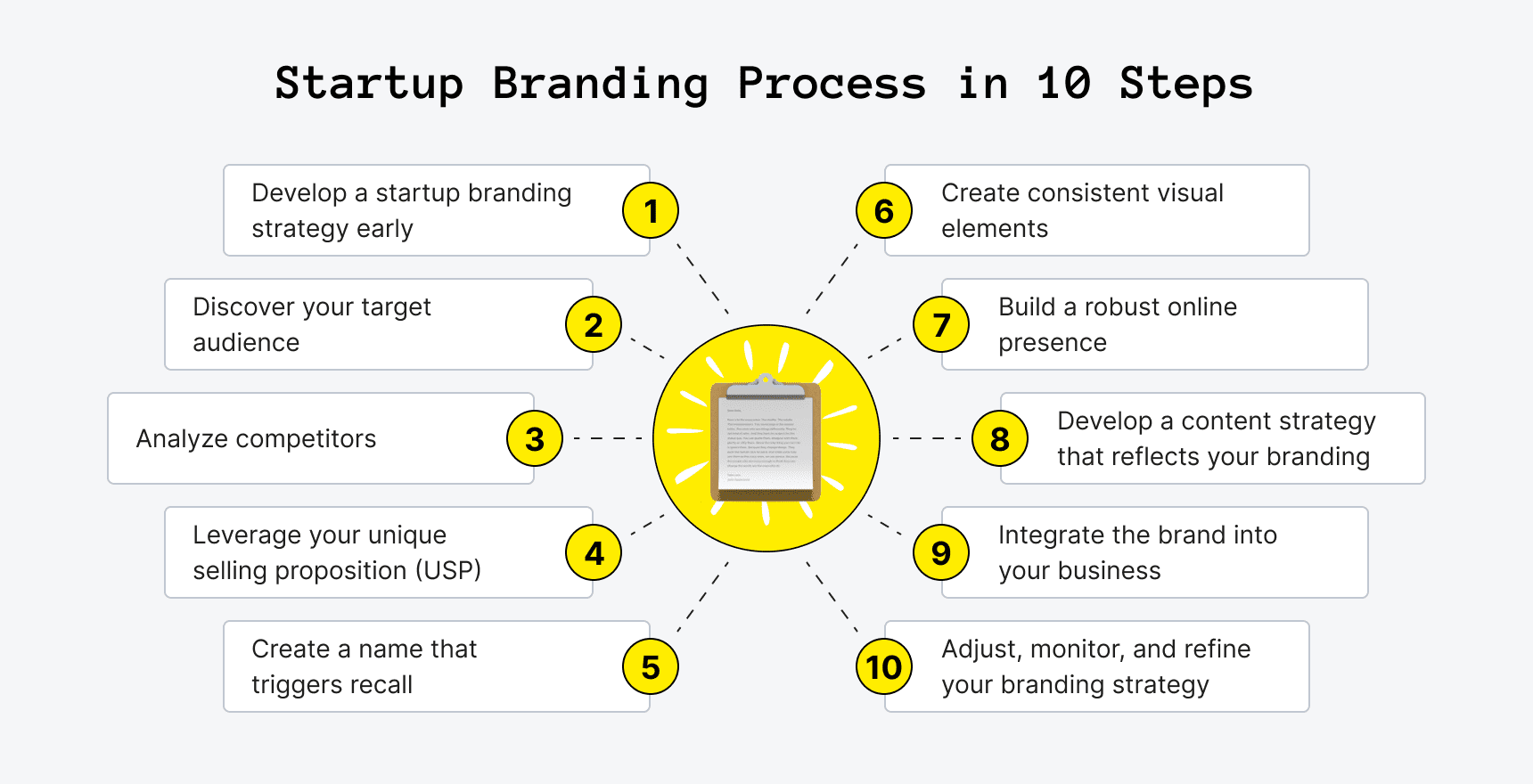
In the relentless landscape of entrepreneurship, your Insight On Startup Branding For Article Updateis the compass guiding your journey to success. Dive into our updated article to discover an arsenal of invaluable insights on startup brandingthat will elevate your businessfrom fledgling to formidable. We'll delve deep into the core strategies that resonate with your audience, establish credibility, and set your venture apart in a crowded market.
This comprehensive update encompasses the latest trends, innovative techniques, and practical advice, empowering you to forge a brand identity that speaks volumes. From decoding the psychology of consumer perception to harnessing the power of storytelling, this article serves as your go-to resource, offering actionable steps and real-world examples to fortify your startup's brand and unleash its full potential in today's competitive landscape.
What Is Branding?
Brandingis the process of creating a unique name and image for a product or company in the minds of consumers, with a consistent theme that is easily recognizable as belonging to that product or company.
Brandingis essential for businesses because it helps to create a strong perception of the brand in the minds of consumers. This perception can be used to influence consumers' purchasing decisions, and it can also help to build customer loyalty.
There are many different elements that can contribute to a strong brand, Including:
- A strong name -The name of a brand should be memorable, easy to pronounce, and relevant to the product or company.
- A consistent logo -The logo of a brand should be simple, recognizable, and easy to reproduce.
- A consistent brand voice -The brand voice should be consistent across all marketing materials, and it should reflect the personality of the brand.
- A consistent brand message -The brand message should be clear, concise, and easy to understand.
- A consistent brand experience -The brand experience should be consistent across all touchpoints, including the product, the website, and the customer service.
Branding is an ongoing process, and it is important to regularly review and update your branding strategy to ensure that it is still relevant to your target audience.
Why Is Startup Branding Important?
- Supports Long-Term Growth -Investing in branding from the outset lays the foundation for long-term growth and success. A strong brand can evolve over time, adapting to changing market conditions and customer preferences, while maintaining its core identity and appeal.
- Guides Decision-Making -Branding serves as a compass for decision-making, ensuring that all aspects of the company align with its core values and messaging. This consistency strengthens the brand's identity and reinforces its position in the market.
- Builds Trust and Credibility -Branding instills trust and credibility in a startup by projecting a professional and consistent image. This is particularly important in the early stages when building a reputation and establishing a foothold in the market.
- Attracts Customers and Investors -A well-crafted brand resonates with the target audience, attracting customers who identify with the company's values, personality, and messaging. This can lead to increased customer acquisition, loyalty, and advocacy.
- Differentiates from Competitors -In today's competitive landscape, it's essential for startups to stand out from the crowd. A strong brand helps establish a unique identity and differentiates the company from its rivals, making it more recognizable and memorable to potential customers.
7 Essential Branding Tips For Startups
Here are the 7 essential branding tips for startups:
1. Measure And Adapt
Your branding is an ongoing process. It's important to track your progress and make adjustments as needed. Use analytics to measure your branding efforts and make sure you're reaching your target audience. Be willing to adapt your branding as your businessand market evolve.
2. Build Relationships
Branding is not just about creating a logo and tagline. It's also about building relationships with your target audience. Engage with them on social media, participate in industry events, and offer excellent customer service. By building these relationships, you'll create a community of loyal supporters who will help you to spread the word about your brand.
3. Be Authentic
Consumers can spot a fake from a mile away. So, it's important to be authentic in all of your branding communications. Be true to your brand values and don't try to be something you're not. Your authenticity will resonate with your audience and build trust.
4. Tell A Compelling Brand Story
Your brand story is the narrative that explains why your startup exists and what you're trying to achieve. It should be authentic, emotional, and inspiring. A great brand story will help you to connect with your target audience on an emotional level and build a loyal following.
5. Create A Consistent Brand Identity
Your brand identity is the visual representation of your brand, including your logo, colors, typography, and imagery. It should be consistent across all of your marketing materials, both online and offline. A strong brand identity will help you to create a sense of recognition and trust with your target audience.
6. Develop A Strong Brand Positioning
Your brand positioning is your unique selling proposition (USP) that sets you apart from your competitors. What makes your startup special? What value do you offer that your competitors don't? Once you've identified your USP, you can use it to inform all of your branding decisions.
7. Understand Your Target Audience
Before you can start crafting your branding message, you need to have a deep understanding of your target audience. Who are they? What are their needs, wants, and pain points? What are their motivations and aspirations? Once you know your audience, you can tailor your branding message to resonate with them on a personal level.
What Are Insights In Branding?
Brand insights are the hidden gems of branding, those deep, actionable understandingsthat illuminate your brand's true potential and guide its path to success. They go beyond data and facts to reveal:
- Customer truths -What motivates your target audience? What are their unmet needs and aspirations? How do they interact with your brand?
- Brand essence - What makes your brand unique and valuable? What values and emotions does it stand for? How is it different from competitors?
- Cultural context -How is your brand positioned within the broader social and cultural landscape? What trends and shifts might impact its future?
Think of insights as the bridge between your brand and its audience. They help you:
- Make strategic decisions -Insights inform your brand positioning, messaging, and creative direction. They guide you in developing products and services that resonate with your target audience.
- Build meaningful relationships -By understanding your audience's needs and motivations, you can create authentic connections with them. This fosters loyalty and advocacy.
- Differentiate from competitors -Insights help you identify what sets your brand apart and communicate it effectively. They make your brand stand out in a crowded marketplace.
- Drive innovation - Insights fuel creativity and inspire new ideas for products, services, and experiences that meet evolving needs.
Examples Of Powerful Brand Insights
Here are some examples of powerful brand insights:
- Patagonia -"Outdoor enthusiasts don't just want gear, they want experiences and a sense of community."
- Dove - "Real beauty is about confidence and individuality, not conforming to unrealistic standards."
- Airbnb -"Travelers don't just want to see new places, they want to feel like they belong there."
Improve Your Visibility By Building A Robust Online Presence
A strong online presence is crucial for any business, especially startups. It allows you to reach a wider audience, build brand awareness, and generate leads. But what exactly does it mean to have a strong online presence?
Key Components
- Positive online reviews -Encourage your customers to leave positive reviews of your business online. This will help build trust and credibility with potential customers.
- Effective SEO- Search engine optimization(SEO) is the process of making your website rank higher in search results. This will help more people find your website when they're searching for products or services like yours.
- High-quality content-Create informative and engaging content that will attract visitors to your website and social media pages. This could include blog posts, articles, infographics, or videos.
- Active social media accounts -Social media is a great way to connect with potential customers and build relationships. Make sure you're active on the platforms where your target audience is most likely to be.
- A well-designed website -Your website is your online storefront, so it's important to make a good first impression. Your website should be easy to navigate, informative, and visually appealing.
Benefits Of Having A Strong Online Presence
- Improved customer engagement -Social media and other online platforms provide great opportunities to connect with your customers and build relationships. This can lead to increased customer loyalty and satisfaction.
- Enhanced credibility -A strong online presence will make your business appear more credible and trustworthy. This is especially important for startups, as potential customers may be hesitant to do business with a company they don't know.
- Improved website traffic -A well-designed website and effective SEOwill help more people find your website. This will lead to more leads and sales.
- Increased brand awareness -A strong online presence will help people become more familiar with your brand. This is essential for building a loyal customer base.
Startup Branding Process - 10 Steps To Follow
Building a strong brand is crucial for any startup, and the process involves several key steps. Here's a breakdown of each step in detail:
Step 1 - Develop A Startup Branding Strategy Early
Don't wait until launch to define your brand. This step involves:
- Vision and Mission -Define your core purpose and values. What problem are you solving? What impact do you want to make?
- Target Audience - Who are your ideal customers? Understanding their demographics, needs, and pain points is essential.
- Competitive Landscape -Analyze your competitors' strengths and weaknesses. Identify what makes you unique and how you stand out.
Step 2 - Discover Your Target Audience:
Go beyond demographics. Deeply understand your audience's:
- Motivations and aspirations -What drives them? What are their hopes and dreams?
- Challenges and pain points -What problems do they face? How can your product or service help them?
- Communication preferences -How do they consume information? What channels do they use?
Step 3 - Analyze Competitors
Research your competition thoroughly. Analyze their:
- Branding strategies-What are their key messages and visual elements?
- Strengths and weaknesses -Where do they excel? Where can you improve?
- Unique selling proposition (USP) - What makes them different? How can you differentiate yourself?
Step 4 - Leverage Your Unique Selling Proposition (USP)
Identify your unique value proposition that sets you apart. Your USP should be:
- Clear and concise -Easily communicated in a single sentence.
- Compelling and relevant -Resonates with your target audience.
- Differentiating -Sets you apart from competitors.
Step 5 - Create A Name That Triggers Recall
Your name should be:
- Memorable and easy to pronounce - Sticks in the mind and rolls off the tongue.
- Relevant to your brand -Reflects your values and USP.
- Available and trademarkable -Unique and not already taken.
Step 6 - Create Consistent Visual Elements
Develop a visual identity that is:
- Cohesive and recognizable -Consistent across all platforms and touchpoints.
- Appealing to your target audience -Resonates with their preferences and emotions.
- Professional and high-quality -Creates a positive first impression.
Step 7 - Improve Your Visibility By Building A Robust Online Presence
Claim your domain name, create a website and social media profiles. Optimize them for search engines and engage your audience actively.
Step 8 - Develop A Content Strategy That Reflects Your Branding
Create content that is:
- Informative and valuable -Provides your audience with insights and solutions.
- Engaging and consistent -Consistent with your brand voice and message.
- Optimized for your chosen channels -Tailored for each platform and audience.
Step 9 - Integrate The Brand Into Your Business
Ensure your brand is reflected in all aspects of your business, from:
- Customer service interactions -Consistent with your brand values and voice.
- Internal culture - Employees embody the brand's values and mission.
- Marketing and communication -Consistent messaging across all channels.
Step 10 - Adjust, Monitor, And Refine Your Branding Strategy
Branding is a continuous process. Regularly monitor:
- Customer feedback -How is your brand perceived? What are areas for improvement?
- Market trends -Stay ahead of the curve and adapt your brand accordingly.
- Performance metrics -Analyze data to measure your brand's effectiveness.
FAQ's About Insight On Startup Branding For Article Update
How Do You Create A Brand Insight?
The first step to generate brand insights and ideas is to research your audience. You need to understand who they are, what they want, and how they behave. You can use various methods to collect and analyze data, such as surveys, interviews, focus groups, observation, or online analytics.
How Do You Get Insights In Marketing?
- Customer feedback. Soliciting customer feedback can be one of the most powerful ways to gather marketing insight because you'll be getting your information straight from the horse's mouth, rather than having to extrapolate from data.
- Social and support listening.
- Digital analytics.
Why Is It Important To Update Your Brand?
By refreshing your brand, you can differentiate yourself from competitors, increase brand recognition, improve customer perception, adapt to changing market conditions, and boost employee morale. All of these benefits can help position your business for long-term success, even during challenging economic times.
Conclusion
As we draw the curtains on this comprehensive exploration of startup branding, it's clear that establishing a compelling brand identity isn't just a choice – it's a necessity for any burgeoning business. Your brand is the bridge connecting your vision with your audience, fostering trust, loyalty, and recognition. From understanding the nuances of your target market to weaving a narrative that captivates hearts and minds.
Remember, building a brand isn't a one-time endeavor; it's an ongoing process that evolves alongside your business. Embrace change, leverage innovation, and adapt to emerging trends while staying true to the core values that define your startup. With these insights as your guiding beacon, propel your brand forward, leaving an indelible mark on the industry and etching your startup's name into the annals of success.


